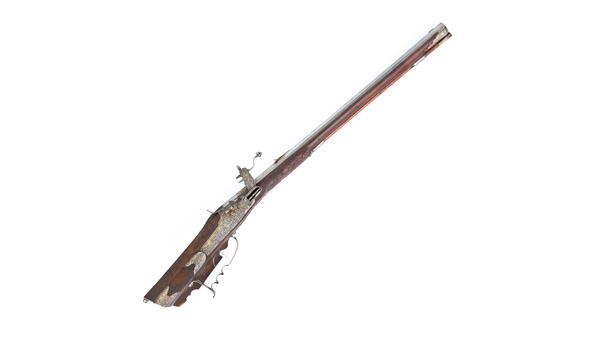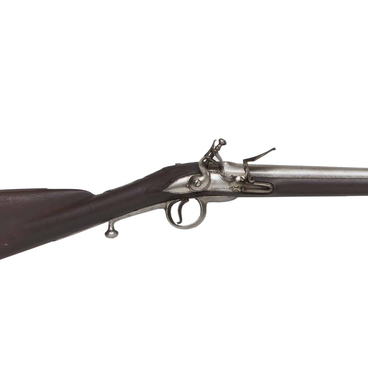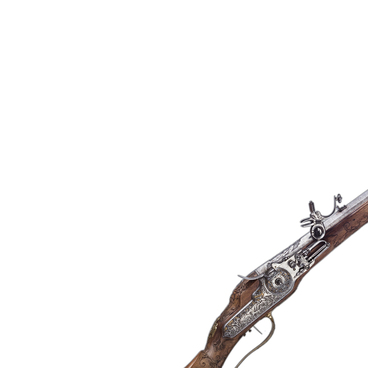The wheellock rifle from the Gatchina Palace and Estate Museum was made in Dresden in the 1730–1740s. It was kept in the Oranienbaum Rüstkammer until 1777, when Catherine II allowed Count Grigory Orlov to take it. So the rifle was transferred to the Gatchina armoury. The twin-rifle was left in Oranienbaun and later, in 1810, was sent to Moscow. Nowadays it is exhibited in the Armoury Chamber of the Moscow Kremlin. From 1823 till 1941 the rifle was kept in the Arms Gallery of the Gatchina Palace. In 1941 it was evacuated to the city of Sarapul. Only 47 years later it returned to Gatchina from the Tsarskoe Selo State Museum and Heritage Site. The barrel is made of forged iron and is octagonal in section. The bore has seven semi-circular grooves. The rear sight is made of iron in the form of a low blade with a notch, while the front sight is made of silver. The lower plane of the barrel has three eyelets for barrel pins. The rifle has a wheellock mechanism. All its parts are richly decorated in the chasing technique: the plate — with the scene of a cavalry battle, the dog — with an eagle, and the dog brace — with a mascaron and stylised floral pattern. Along the upper edge of the lock plate near the dog there is an engraved inscription: ‘Martini a Dresde’. The rifle is fitted with a hair trigger — a mechanism which allows to release the trigger with the slightest pressure. The stock is made of nut wood, the fore-end runs all the way to the muzzle and has an iron cap. The stock form is closer to the crossbow stock — it has a wide cheek piece and a considerable down pitch. It is also fitted with a patch box. The fore-end cap is decorated with curls in the chasing technique. An openwork bridle is made up of floral curls and a monster head. Ramrod pipes are faceted. The end of the tail pipe is decorated with curls in the chasing technique. The rifle has several tiny chips on wooden parts: on the bump by the front end of the trigger guard and on the right side of the fore-end by the front pin. There are also several cracks on the fore-end by the end of the tail pipe. Metal parts have minor traces of corrosion. The stock has tiny dents and scratches and there are also several dents and scratches on the ramrod.
№4 Wheellock rifle
Creation period
1730-1740s
Place of сreation
Dresden, Saxony, Germany
Dimensions
overall length — 105 cm, barrel length — 74.4 cm, calibre — 16 mm
Technique
forging, casting, wood carving, horn carving, engraving, chasing
Collection
0
Open in app#1
Johann Christian Martini
№4 Wheellock rifle
#2
#3
Ministry of Culture of the Russian Federation
read morehide
00:00
00:00
1x
№4 Wheellock rifle
Creation period
1730-1740s
Place of сreation
Dresden, Saxony, Germany
Dimensions
overall length — 105 cm, barrel length — 74.4 cm, calibre — 16 mm
Technique
forging, casting, wood carving, horn carving, engraving, chasing
Collection
0
Open in app
Share



